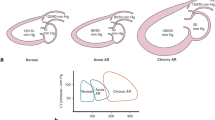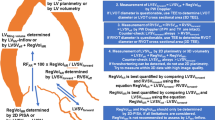Abstract
Background
Tricuspid regurgitation (TR) in hypoplastic left heart syndrome (HLHS) is associated with morbidity and mortality. TR mechanisms and the impact of tricuspid valve repair (TVR) are unclear. We examined HLHS TR mechanisms, TVR’s impact on tricuspid valve (TV), and features of poor TVR durability.
Methods
We retrospectively compared 35 HLHS TVR cases and 35 age/stage-matched HLHS controls who do not undergo TVR. Pre-operative 3-dimensional echocardiography (3DE) assessed overall TV morphology (prolapse, normal, tethered), leaflet morphology, vena contracta area, and TR location. Two-dimensional echocardiography measured TV annulus diameter, RV fractional area change (RVFAC), sphericity, and TR grade at three time points (pre-op, early post-op, and latest follow-up).
Results
Pre-op, TVR group, and controls had no difference in age, RV function or shape, or TV dimension. TVR group most commonly had anterior leaflet prolapse followed by septal leaflet prolapse or tethering. TR jet arises centrally (63%) and anterior septally (26%). Posterior annuloplasty (69%), commissuroplasty (37%), and leaflet repair (37%) were surgical techniques commonly performed. At early post-op, TR grade and TV annulus decreased. At latest follow-up, TV annulus remained reduced; however, 50% had significant TR. 25% required TV reoperation. Larger vena contracta at TVR was associated with significant TR.
Conclusion
HLHS patients undergoing TVR had more anterior leaflet prolapse and central TR. While TVR initially reduces annular size and TR grade, 50% redevelop significant TR despite maintained annular reduction. The association of greater TR severity prior to repair with post-op recurrence raises the consideration for earlier repair of TR in HLHS patients.



Similar content being viewed by others
Data Availability
Not applicable.
Code Availability
Not applicable.
References
Kutty S, Colen T, Thompson R et al (2014) Tricuspid regurgitation in HLHS. Circ Cardiovasc Imaging 7:765–772
Barber G, Helton JG, Aglira BA et al (1988) The significance of tricuspid regurgitation in HLHS. Am Heart J 116:1563–1567
Elmi M, Hickey EJ, Williams WG, Van Arsdell G, Caldarone CA, McCrindle B (2011) Long-term tricuspid valve function after Norwood operation. J Thorac Cardiovasc Surg 142:1341–1347
Ohye RG, Gomez CA, Goldberg CS, Graves HL, Devaney EJ, Bove EL (2004) Tricuspid valve repair in HLHS. J Thorac Cardiovasc Surg 127:465–472
Nii M, Guerra V, Roman KS, Macgowan CK, Smallhorn JF (2006) Three-dimensional tricuspid annular function provides insight into the mechanisms of tricuspid valve regurgitation in classic HLHS. J Am Soc Echocardiogr 19:391–402
Takahashi K, Inage A, Rebeyka IM et al (2009) Real-time 3-dimensional echocardiography provides new insight into mechanisms of tricuspid valve regurgitation in patients with HLHS. Circulation 120:1091–1098
Colen T, Kutty S, Thompson RB et al (2018) Tricuspid valve adaptation during the first interstage period in HLHS. J Am Soc Echocardiogr 31:624–633
Takahashi K, Mackie AS, Rebeyka IM et al (2010) Two-dimensional versus transthoracic real-time three-dimensional echocardiography in the evaluation of the mechanisms and sites of atrioventricular valve regurgitation in a congenital heart disease population. J Am Soc Echocardiogr 23:726–734
Bove EL, Ohye RG, Devaney EJ, Hirsch J (2007) Tricuspid valve repair for HLHS and the failing right ventricle. Pediatric Cardiac Surg Annual 10:101–104
Honjo O, Atlin CR, Mertens L et al (2011) Atrioventricular valve repair in patients with functional single-ventricle physiology: Impact of ventricular and valve function and morphology on survival and reintervention. J Thorac Cardiovasc Surg 142:326–335
Bharucha T, Honjo O, Seller N et al (2013) Mechanisms of tricuspid valve regurgitation in HLHS: a case-matched echocardiographic–surgical comparison study. Eur Heart J Cardiovasc Imaging 14:135–141
Bautista-Hernandez V, Brown DW, Loyola H et al (2014) Mechanisms of tricuspid regurgitation in patients with HLHS undergoing tricuspid valvuloplasty. J Thorac Cardiovasc Surg 148:832–840
Tretter JT, Sarwark AE, Anderson RH, Spicer DE (2016) Assessment of the anatomical variation to be found in the normal tricuspid valve. Clin Anat 29:399–407
Stankovic I, Daraban AM, Jasaityte R, Neskovic AN, Claus P, Voigt JU (2014) Incremental value of the en face view of the tricuspid valve by two-dimensional and three-dimensional echocardiography for accurate identification of tricuspid valve leaflets. J Am Soc Echocardiogr 27:376–384
Stamm C, Anderson RH, Ho SY (1997) The morphologically tricuspid valve in HLHS. Eur J Cardiothorac Surg 12:587–592
Mah K, Khoo NS, Tham E et al (2021) Tricuspid regurgitation in HLHS: three-dimensional echocardiography provides additional information in describing jet location. J Am Soc Echocardiogr. https://doi.org/10.1016/j.echo.2020.12.010
Ugaki S, Khoo NS, Ross DB, Rebeyka IM, Adatia I (2013) Tricuspid valve repair improves early right ventricular and tricuspid valve remodeling in patients with HLHS. J Thorac Cardiovasc Surg 145:446–450
Alsoufi B, McCracken C, Kochilas L, Clabby M, Kanter K (2018) Factors associated with interstage mortality following neonatal single ventricle palliation. World J Pediatr Congenit Heart Surg 9:616–623
Funding
This study was generously sponsored by Women and Children’s Health Research Institute.
Author information
Authors and Affiliations
Corresponding author
Ethics declarations
Conflict of interest
All authors declare that they have no conflict of interest to disclose.
Ethical Approval
This retrospective chart review study involving human participants was in accordance with the ethical standards of the institutional and national research committee and with the 1964 Helsinki Declaration and its later amendments or comparable ethical standards. The research ethics board at the University of Alberta approved this study.
Consent to Participate
This study is retrospective and was approved by both institutions research ethics boards.
Consent for Publication
Not applicable.
Additional information
Publisher's Note
Springer Nature remains neutral with regard to jurisdictional claims in published maps and institutional affiliations.
Rights and permissions
About this article
Cite this article
Mah, K., Khoo, N.S., Martin, BJ. et al. Insights from 3D Echocardiography in Hypoplastic Left Heart Syndrome Patients Undergoing TV Repair. Pediatr Cardiol 43, 735–743 (2022). https://doi.org/10.1007/s00246-021-02780-1
Received:
Accepted:
Published:
Issue Date:
DOI: https://doi.org/10.1007/s00246-021-02780-1




